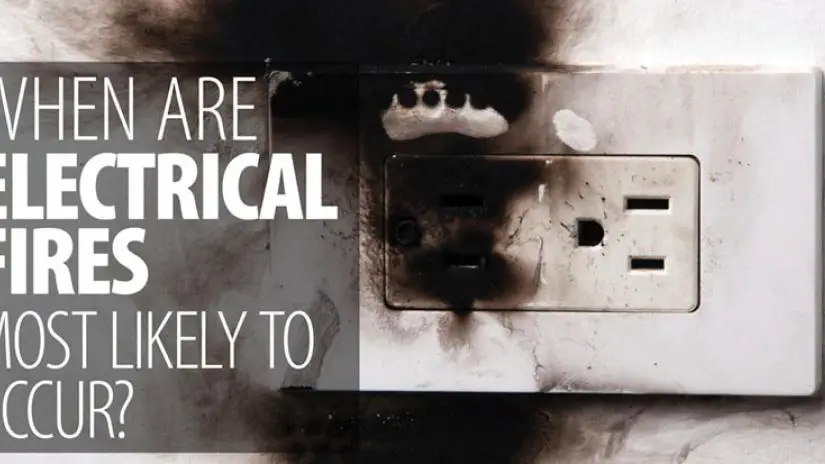
According to Rainbow Restoration, electrical fires are most likely to occur during specific times and conditions.
|
Electrical fires are most likely to occur during cold, dry winter months. With this season swiftly approaching, now is the perfect time to learn more about what sparks electrical fires and how to protect your home against this potential disaster.
Surprising Facts and Figures about Electrical Fires
Based on data from the National Fire Protection Association (NFPA), more than 47,000 home structure fires each year involve some sort of electrical malfunction or failure. These fires collectively cause more than 400 civilian deaths, 1,500 civilian injuries and $1.4 billion in property damage annually.
From 2007 to 2011, electrical fires accounted for 13% of all home structure fires. The main sources of electrical fires include wiring (63%), lamps and light fixtures (20%), cords and plugs (11%), and transformers and power supplies (6%).
The United States Fire Administration (USFA) estimates that nearly half of all electrical fire deaths occur in the four-month period spanning December through March. Deaths also peak between midnight and 6:00 am when people are caught off guard by fires while they sleep.
How to Protect Your Home Against Electrical Fires
Take two primary approaches: fire prevention to avoid a blaze in the first place and fire protection to extinguish a fire if one breaks out.
Prevent Electrical Fires
Practice these tips during the winter months and all year round to prevent electrical fires:
- Hire an electrician: Every decade or so, have an electrician conduct a full inspection to spot and repair potential problems that could spark or otherwise cause a fire.
- Replace old wiring: If your home was built before 1970, it may have knob and tube wiring or other outdated features such as two-prong outlets that need to be updated for safety.
- Check plugs and cords: Old appliances and electronics may have frayed cords or damaged plugs. Either repair the wiring or completely replace the device to eliminate this fire hazard.
- Don’t overload your outlets: Plug only one heat-producing appliance into a single wall outlet at a time. Never use extension cords to power heat-producing appliances. If you find yourself using extension cords on a permanent basis, hire an electrician to install more outlets for improved electrical safety.
- Use surge protectors: Plug computers and other sensitive electronics into surge protectors to not only safeguard these devices but also to reduce the risk of an overloaded outlet that could spark and cause a fire.
To reduce the risk for electrical fires in the home, click here to review safety measures from the experts at Rainbow Restoration about safety tips for your home or business.
Know How to Use a Fire Extinguisher
While the best way to protect your home from electrical fires is to prevent them in the first place, knowing how to extinguish an electrical fire is equally important to protect against loss of life and property damage.
Click here to review helpful tips about the different types of fire extinguishers and how to use them.
Remember these other important fire extinguisher tips:
- Stand with your back to the exit to prevent trapping yourself inside.
- Stand several feet away while extinguishing the blaze.
- Work in pairs for safety whenever possible.
- If the fire is uncontained and growing quickly, evacuate and call the fire department.
If your home is damaged in an electrical fire, you can begin the restoration process with help from Rainbow Restoration®. Contact us today for additional fire safety tips or to schedule fire restoration services.
Additional Reading:
Understanding the Classes & Choosing the Right Fire Extinguisher
Smoke, Soot, and Mold: Fire Damage’s Toxic Trio
